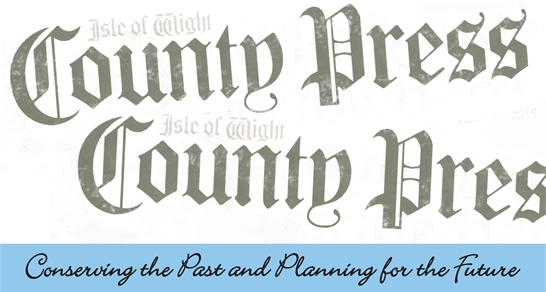August 2017
Fans of the TV Series “Poldark” will recall the hideaway/cellar in the farmhouse used primarily to store contraband. There is such a construction in an inn, in Shanklin on the Isle of Wight. In the “Moonfleet” tale of treasure seeking and smuggling the well at Carisbrooke is featured. Smuggling and the secreting away of contraband is well recorded on the Island. The venues and the personalities contribute to its character, history and economy.
Tax evasion was seriously practised from 1750. The Island with its varied coast line, hills, valleys and scattered settlements facilitated the landing and handling of foreign goods.
Taking salvage from ship wrecks and theft of cargo were woven in the economies of all strata of society. Fishing needed supplementing incomes. By 1800 over 2000 items incurred duty. Chief commodities were tea, spirits ,tobacco and fabrics. On the mainland large gangs were common whilst here it was a family affair.
The Kingswells of Luccombe, Wheelers of Blackgang and Conway Brothers of Totland have a place in history and folk law for their exploits and Captain Harvey who lived at The Duck, an unlicensed house, in St. Lawrence was another personality.
Common penalties were fines, imprisonment,and compulsory enlistment in the navy. Women were prosecuted too and between 1830 and 1851 twenty seven went to court.
Ex mariners found work as Excise Men. Some were accommodated in Coastguard Stations and cottages positioned every three miles along the coast. From 1825 their distinctive shape makes them easy to recognise at Atherfield, Freshwater and Brook. The name Watch House indicated customs posts. While the name Free Traders indicated smugglers.
The Back of the Wight saw much smuggling and the route south to north through Brighstone, Brook, Calbourne,Newbridge, Shalfleet to Cowes was well used. West to east the journey centred in Rookley. The Star, now The Chequers Inn, was a customs house.
Those white walled, stone built road side inns with inglenook fireplaces, big chimney breasts and stone flagged floors were the places organising smuggling. Some e.g. The Sloop in Wootton have been pulled down and another built. Some have annexes and additions e.g. Niton's White Lion, Totland's High Down Inn and Shanklin's Chine Inn. Whitwell's White Horse pub is a good architectural example of hostelry style. Churches and grave yards have useful hidey holes where men and goods could be stored. Mottistone has a large grave capable of hiding seven men.
Tunnels are known to have been built at Wootton from the Sloop to Ivy House, St. Helen's churchyard to The Priory, Tower Cottage to Chine Inn in Shanklin,
Caves at Culver Cliff, Blackgang and Freshwater and the wooded chines at Luccombe and Shanklin gave good cover for covert activities.
As an Islander the hard graft to make a living by any trade was life threatening, brutal and dangerous. As a part of coastal development and English history it provides writers and poets with stories and ideas and gives us now a reason to make a journey with more appreciation of the complexity of this Isle of Wight
[Go Back]

